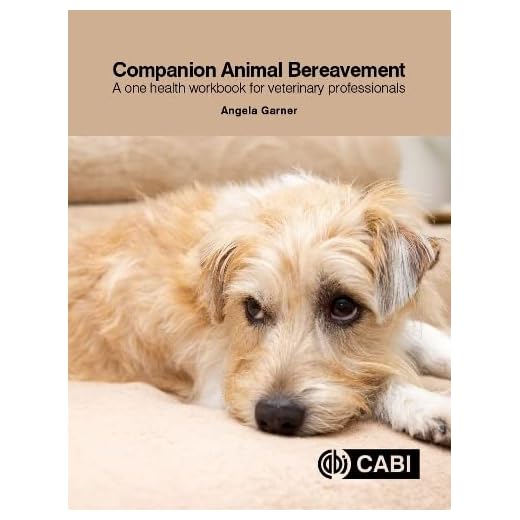




Choosing to end a pet’s suffering is one of the most heart-wrenching decisions any owner faces. If the situation arises where your furry friend is in pain or facing terminal illness, opting for a familiar environment can provide comfort to both pet and owner. This method allows for a peaceful farewell, surrounded by loved ones in a place that holds cherished memories.
It’s advisable to consult with a veterinarian who offers at-home services. Many professionals specialise in providing this compassionate choice, ensuring that the process is as gentle as possible. They will guide you through what to expect, helping to ease the emotional burden with their expertise and kindness.
Moreover, preparing your space can create a calming atmosphere. Consider having favourite blankets, toys, or even soothing music available. These small touches can help make the experience less stressful, contributing to a serene environment for the final moments.
Finally, take the time to gather your thoughts and say goodbye in a manner that feels right for you and your beloved companion. This moment, though painful, can be a celebration of the joy and love shared throughout the years.
Home Euthanasia for Pets
Choosing to end a beloved pet’s life in a familiar environment can be a compassionate choice. Many veterinary services offer this option, allowing for a more peaceful farewell. It’s crucial to research local veterinarians who provide in-home euthanasia and discuss any specific requirements or conditions they may have.
Steps to Arrange In-Home Services
Begin by contacting a veterinary clinic that specializes in this service. They will guide you through the process, explaining what to expect. Some practices may require a prior consultation to assess the pet’s condition before scheduling the procedure. Additionally, consider preparing the space where the procedure will take place, ensuring it’s comfortable and quiet for both the pet and family members.
Emotional Preparation
It’s important to discuss feelings and memories with family prior to the event. Creating a calm atmosphere can aid in managing emotions during this difficult time. Many pet owners find it comforting to have a favourite blanket or toy nearby. This personal touch can help ease the transition and make the experience more serene.
Understanding Home Euthanasia for Dogs
Choosing to end a pet’s suffering in a familiar environment can offer comfort to both the animal and the owner. Home euthanasia allows for a peaceful farewell, surrounded by cherished family members. It’s advisable to consult with a veterinarian who specializes in this service, ensuring a compassionate process tailored to specific needs.
Benefits of At-Home Procedures
One significant advantage of this approach is the reduced stress for the animal. Many pets experience anxiety in clinical settings, while the comfort of home can soothe them in their final moments. This setting can foster a calm atmosphere, allowing for a dignified goodbye. Additionally, family members can be present, creating an emotionally supportive environment, which is often vital for closure.
Preparation for the Event
Before the appointment, discussing the procedure thoroughly with the vet is beneficial. Understanding what to expect helps ease anxiety. Consider preparing a comfortable area where the animal feels safe. Familiar blankets or favourite toys can enhance comfort. It’s also wise to discuss any post-procedure arrangements, such as cremation or burial options, in advance to alleviate additional stress during a challenging time.
Legal Considerations for At-Home Euthanasia
Before proceeding with at-home euthanasia, it’s crucial to understand the legal framework surrounding this sensitive process. Each jurisdiction may have its own regulations, and it’s essential to consult local laws to ensure compliance.
- Veterinary Licensing: Only licensed veterinarians are permitted to perform euthanasia. Ensure the professional you engage holds the appropriate credentials.
- Permits and Regulations: Some areas may require specific permits for at-home euthanasia. Check with local authorities or veterinary boards for guidance.
- Notification Requirements: Certain regions may mandate that you notify local animal control or health departments prior to the procedure.
- Disposal of Remains: Legal obligations regarding the disposal of remains vary. Research local laws about cremation or burial to adhere to regulations.
- Insurance Considerations: Verify if your pet insurance covers at-home services. This may affect your financial preparation.
Consulting with a veterinarian is a wise step. They can provide insights into local laws and help navigate the process smoothly. Always keep documentation of the procedure, including consent forms and any communication with veterinary professionals, for your records.
Choosing the Right Veterinary Service for Home Euthanasia
Prioritising comfort for both the pet and the owner is key. Start by researching local veterinary services that specialise in at-home euthanasia. Look for reviews and testimonials from other pet owners to gauge their experiences.
Ensure the veterinarian is experienced in this delicate procedure. Ask about their qualifications and how many home euthanasias they have performed. It’s also worth checking if they offer pre-euthanasia consultations to discuss the process thoroughly.
Assess the empathy and compassion of the staff. A kind approach can make a significant difference during this difficult time. Reach out to the service and inquire about how they handle emotional support for pet owners.
Consider the logistics involved. Confirm if the service can accommodate your preferred timing and location. Some vets may provide flexible scheduling options, which can be particularly helpful during such a sensitive period.
| Criteria | Considerations |
|---|---|
| Experience | Number of home euthanasias performed, qualifications. |
| Empathy | Compassionate approach, emotional support offered. |
| Logistics | Scheduling flexibility, travel distance, availability. |
| Cost | Transparent pricing, payment options, any additional fees. |
Discuss costs upfront to avoid any surprises. Some services offer transparent pricing, while others might include extra charges for travel or additional services. Planning ahead can ease some of the stress associated with this process.
Lastly, trust your instincts. If a particular service doesn’t feel right, it’s perfectly acceptable to seek alternatives. The right choice should bring peace of mind during a challenging time.
Preparing Your Home for the Procedure
Ensure a serene environment for this significant moment by following these steps:
- Choose a Comfortable Space: Select a familiar location where your pet feels at ease. This could be their favourite spot or a quiet room away from distractions.
- Minimise Noise: Reduce ambient sounds. Turn off TV and music, and ask family members to keep the atmosphere calm.
- Gather Supplies: Have necessary items ready, such as blankets, favourite toys, or treats. These can provide comfort and a sense of security.
- Prepare for the Vet’s Arrival: Clear a pathway for the veterinarian to access the chosen space easily. Ensure the area is clean and tidy.
- Consider Lighting: Soft, natural light can create a soothing atmosphere. Dim the lights if needed to enhance comfort.
- Plan for Aftercare: Decide in advance how you wish to handle remains, whether through burial or cremation, and keep relevant details handy.
Taking these steps can help create a peaceful environment, ensuring your furry companion feels loved and secure. If you’re considering dietary options during this time, exploring the best canned dog food for itchy skin may also be beneficial.
Emotional Support for You and Your Family
Seek out trusted friends or family members during this difficult time. Share your feelings and memories; it can be incredibly healing. Consider creating a small tribute, like a photo album or a memory box filled with your pet’s belongings. This can offer comfort and serve as a beautiful reminder of the joy your companion brought.
Engage in self-care practices. Whether it’s going for a walk, journaling, or enjoying a quiet moment with a loved one, finding ways to care for your emotional well-being is crucial. Look for support groups in your area or online; connecting with others who have faced similar losses can help alleviate feelings of isolation.
Involve children in the process if applicable. Allow them to express their emotions openly. Encourage them to share their favourite memories or even draw pictures of their beloved pet. This can be a significant step in helping them understand and cope with the loss.
Consider memorialising your pet in a special way. Planting a tree or flower garden in their honour can provide a lasting tribute. If you’re interested in a more creative approach, you might explore options like commissioning a piece of artwork inspired by your furry friend.
Lastly, be gentle with yourself. Grief is a personal journey, and there’s no right or wrong way to feel. If you find it overwhelming, don’t hesitate to reach out to a mental health professional for guidance and support.
For a change of pace, if you’re also handling outdoor maintenance, check out this guide on how to use intex pool vacuum with garden hose–it might offer a helpful distraction during this tough time.
Aftercare Options for Your Pet’s Remains
Choosing how to handle the remains of a beloved companion is a significant step. Several options are available depending on personal preferences and local regulations.
One option is private cremation, where only your pet is cremated, and the ashes are returned to you. This allows for a personal keepsake, such as an urn or a memorial garden. Look for local veterinarians or pet crematoriums that offer this service, ensuring they prioritise respect and care during the process.
Another choice is communal cremation, where multiple animals are cremated together. In this case, ashes are not returned. This option is usually more economical, but may not provide the same personal connection as private cremation.
Burial is also a viable route. If you have a yard or access to a pet cemetery, this allows for a more traditional farewell. Make sure to check local laws regarding pet burial, as some areas have specific regulations about where and how pets can be buried.
Consider biodegradable urns that allow you to plant a tree or flowers with the ashes, creating a living tribute. This method not only memorialises your pet but also contributes positively to the environment.
Donating the remains to a veterinary school for educational purposes is another option. This can help train future veterinarians while providing closure for you, knowing that your pet is contributing to the learning of others.
Whichever option you choose, consult with professionals who can guide you through the process and ensure everything is handled sensitively. It’s important to reflect on what feels right for you and honour the memory of your cherished friend in a way that resonates with your heart.
FAQ:
Is it possible to have my dog euthanised at home?
Yes, many veterinarians offer at-home euthanasia services. This allows your dog to be in a familiar and comfortable environment during their final moments. It’s advisable to contact a local vet to discuss options and ensure they provide this service.
What should I expect during the at-home euthanasia process?
During at-home euthanasia, the veterinarian will typically arrive with necessary equipment and medications. They will first assess your dog and discuss the process with you. Once you’re ready, the vet will administer a sedative to help your dog relax, followed by an injection that will peacefully end their life. You can be with your dog throughout the process, offering comfort and support.
How do I prepare for my dog’s at-home euthanasia?
Preparation can help make the experience more peaceful. First, ensure you have a quiet and comfortable space for your dog. You may want to gather their favourite blankets or toys. It’s also wise to inform family members and decide whether anyone else will be present. Discuss any concerns or questions with your vet beforehand to ease your mind.
Are there any costs associated with at-home euthanasia?
Yes, there are usually costs involved with at-home euthanasia. Prices can vary based on the veterinarian service, location, and any additional services like cremation or burial. It’s a good idea to ask for a detailed breakdown of costs when you contact the vet to avoid surprises.
Can I be with my dog during the at-home euthanasia?
Absolutely. Being with your dog can provide comfort to both you and your pet. Many veterinarians encourage owners to stay close, as it can help your dog feel more secure in their familiar surroundings. You can hold them, talk to them, or simply be present during their final moments.







